SOMA 2013: Big Changes Coming to Law Enforcement, EMS and Fire Rescue
SOMA 2013: Big Changes Coming to Law Enforcement, EMS and Fire Rescue
Continuing from my first article on SOMA 2013, I’d like to talk about some of the Tactical EMS breakout sessions. I didn’t take notes on all of the breakouts, but rather focused on things I thought would be relevant to my level of experience and training. Again, these are from my notes and I won’t be covering everything discussed during the lectures.
I left SOMA knowing that there’s a big swing happening with getting patrol level Law Enforcement training and equipment in TCCC/TEMS. It won’t be tomorrow, but the tide is turning in our favor. I also saw the EMS/Fire Rescue side stepping out of the norm and getting on board with the Rescue Task Force (RTF) concepts. While there are a lot of logistical and command level kinks to be worked out, it’s good to know things are changing.
Boston Bombing, Dr. Ricky Kue
This was a great overview of the bombing from Dr. Kue who was there that day manning the main medical tent. Dr. Kue talked about the medical setup for the marathon which is very extensive. The location of the bombs in close proximity to the main medical tent had a huge impact on lives saved that day. Had the bombs gone off somewhere else along the route, things could’ve been much worse.
Dr. Kue talked about the lack of information at the start and how the first responders were right in the middle of the attack. Dr. Kue is a SWAT Medic and he said one of the first things he did was run to his vehicle and get his body armor.
There was a lot of fear about follow-on attacks and how the medical areas weren’t secure. No one knew if this was an active shooter type event with the bombs being the kick off. Had the attackers stayed and shot it out with police, things would have been much different.
If you look at the photos from the bombing you’ll see a lot of improvised tourniquets which is great. It would have been better to see approved tourniquets applied by all Law Enforcement on scene. I have yet to find a single photo of a LEO there who had a tourniquet on their belt. The counter to this thought is that police should be busy securing the scene, which in this case was total chaos. Everyone was in the “hot zone” on this one!
My overall takeaway from Dr. Kue’s talk was how luck really played into the overall event. You had a huge medical presence already setup; you had doctors, surgeons, nurses and medics on scene volunteering and you had an ambulance evacuation plan already in place. You had citizens jumping into action to help the wounded, instead of leaving the scene which was not secure.
Speaking to our audience: As a bystander do you stay and help or do you tactically retreat? If you are working an event like this in a Law Enforcement role, do you have the tools to treat yourself, your buddy, or a child?
ITS Contributor Scott B. wrote a good article asking some of these same questions. Fog of War: How Would You Respond to an IED Detonation?
After Aurora, Chris Vanderveen
This was a unique lecture as Chris Vanderveen is a reporter for NBC Denver and not a medic or doctor. Chris did a report on the shooting called After Aurora which I would recommend everyone watch before reading further. While the video shows what the majority of the lecture was about, I want to talk about some of the things that stuck out to me. You should know as of SOMA 2013 the gag order has not been lifted on this event, so the realities are yet to be seen.
First of all, never go anywhere without your gun. There have been plenty of articles and debates on an armed person stopping the shooter at the beginning. I’ll just say I will never lay on the ground of a theater and wait to die. I hope those reading this will not either.
Secondly, don’t expect rescue to get inside quickly. To this day, the majority of EMS and Fire services are still staging outside the “warm zone.” As you heard in the video (you did watch the video right?) it was total confusion on the radio. Police apprehended the suspect shortly after the shooting but ambulances still would/could not respond. Police had to evacuate victims in cruisers and one officer made four trips total with eight victims.
Besides the communication problems, another issue came up which was constant during the other breakout sessions. Parked Police vehicles blocked access to the area and fire/ambulances could not have gotten close even if they tried. It was so bad that Police had to make a path through the grass and over curbs of the parking lot to evacuate casualties.
For you LEO’s reading this, it’s certainly something to consider. While a tactical approach is needed, be mindful of piling up cruisers in a way that won’t allow rescue vehicle access. Some will say “who cares, I’ll park wherever I want,” but what if it were one of your family members inside the hot zone?
Here’s something else to consider when it comes to parking lots and vehicles. In this case and in the Boston Bombing, there were numerous people who were walking wounded and evacuated themselves to hospitals. Do you know how to properly jump curbs and medians without getting stuck? Do you have a personal vehicle that will allow this? That lowered Mustang might look cool, but will it allow you to escape a simple parking lot?
If you end up in a situation like this whether you are a LEO, off duty first responder, or citizen, what medical training and equipment do you have right then and there for self of buddy (family) aide? Will you be a “medical multiplier” or a victim?
Advanced Law Enforcement Rapid Response Training (ALERRT), Marshal Will Schwall and Officer John Curnutt
As you saw in the After Aurora video, ALERRT has been at the front of active shooter training. What I see that’s different from all the active shooter classes I’ve been to thus far, is the incorporation of medical training. My agencies past active shooter training consisted of moving to the threat and neutralizing it and that was it. There was nothing mentioned about medical assistance other than calling in the paramedics once the scene was cold.
One neat technique that stood out was the way ALERRT teaches triaging subjects after entering a room. After commanding everyone to the ground to control the room, they tell everyone to get up and place their hands over their face. They then direct them to a wall placing them face to wall. Overwatch is taken up on those subjects. The remaining subjects are either non-ambulatory or a bad guy trying to hide in the group. This is a quick technique to help divide your subjects for security and treatment. This is something to think about and see if it works for you during your next training event.
With the inclusion of RTF tactics, one of the things I saw being talked about a lot was setting up secure cordons to bring rescue personal in and out of the warm zone. If you “ENDEX” (stop) your training after you “neutralize” the threat you are not training to assist rescue personal into the scene. This is something to consider if you’re in a training position and have input into the scenarios. Run the training till the end and see if you can establish a secure cordon for rescue personnel.
Another good piece of information from ALERRT is the United States Active Shooter Events from 2000 to 2010: Training and Equipment Implications. This document goes over some of the data ALERRT collected on active shooters from 2000-2010. They also have a book with extensive data on each event.
ALERRT is in the process of making a video documenting all the US Law Enforcement use of tourniquets. Included will be documentation on self and buddy aid and also LEO use of tourniquets on civilians. The reason for this video is to show the Sheriffs, Chiefs of Police and those who make policy that the data on tourniquet use is solid and they work. There’s no reason every officer in the country should not have training and equipment for self and buddy aide. The military has proven the data, now lets get it out there to the guys on the street. I think this video will be a huge help!
Overview of Dayton Ohio Rescue Task Force Program, Senior Paramedic David Gerstner
This was a good information session for me as I was not previously familiar with the Rescue Task Force concept. What was interesting is how this multi-county concept was setup. Think about the area you live in and imagine going to every Chief of Police, FD Chief and private EMS service and saying we are going to combine cops and paramedics and send them into active shooter incidents. This is what happened in Dayton Ohio and they have jumped numerous hurdles to make it happen.
For more information on the Ohio Task Force 1 you can click HERE, just be aware they are updating the website. If you are in the position to get an RTF in motion I would highly recommend getting ahold of David Gerstner.
Sikh Temple shooting lessons learned, Captain Mike Bolender and Battalion Chief Joe Pulvermacher
This was an excellent lecture about the Sikh Temple shooting and really showed that a positive mindset can literally save your life. Both speakers were there that day from the LEO and FD side and they had excellent in-car video from the scene. While you can google the in car video and get bits and pieces, Cpt. Bolender showed all the videos from the scene. He also showed us the back seat in car video when Lt. Murphy was placed in the back seat.
I’m a big believer in using mental rehearsals to help build a positive mindset at work. Its one thing to talk about it but something entirely different to see Lt. Murphy, who was shot approximately 15 times, literarily willing himself to stay alive and calm in the back seat of that Tahoe. After seeing the video I’m an even bigger believer in having a positive mindset and mentally rehearsing medical emergencies.
Here is an excellent video of Lt. Murphy talking about the incident.
One of the things Cpt. Bolender brought up was the overwhelming response of outside agencies coming to the scene to help. This was great but it brought up some issues with parking (see the theme here) and communications. He said they had everything from squad cars, to the FBI’s armored MRAP, to a huge command buses. Parking became a big problem and Cpt. Bolender suggested that if you end up responding to something like this, to stage your vehicles and send representatives to the command post. This is something to think about if you are a LEO and find yourself on the way to something like this.
While this was a tragic incident it really sparked the Fire Rescue and Police to get updated TEMS training and equipment. The community saw this as well and Chief Pulvermacher was able to get TEMS type training into the schools in the area. This included IFAK kits with actual tourniquets in the class rooms.
If you ever get the chance to attend a lecture from any of those involved in this incident I would highly recommend going.
National TEMS Initiative
The daily schedule went a bit off track at this point during the conference so I’m going to lump a few lectures together.
For starters, there’s a big push to get a “national” TEMS program together to help streamline training and tactics. Right now there’s no clear cut program for medics and officers to be on the same page at a national level. The National TEMS Council is trying to change this and bring a national program together. They’re working on a website which should be completed in the near future and will hopefully explain where this is all going.
I have to say that this is all very confusing for myself and others in law enforcement who don’t have a good grasp on the medical policy side of things. Navigating between the Committee on Tactical Combat Casualty Care guidelines, the NAEMT’s Tactical Combat Casualty Care guidelines, then throw in the LEFR-TCC and what you have is a real PITA. Which one is right for you, which one is right for me? I have a headache as I’m writing this!
A perfect example are the two recent medical training events I was involved in here at my agency. Our unit recently had a medical class which was comprised of TCCC principles taken from the DOD and State Department guidelines. It was a hybrid mix tailored to our units prior level of medical training and our tactics. I also just attended a medical class incorporated into our Deputy Recruit’s active shooter program. This was taught by our counties Tactical Medics and the Co-TCCC guidelines were used. Wouldn’t it make sense to have one training system to go to just like the DOD TCCC guidelines?
The military has it pretty easy as TCCC is the same in all branches of the DOD. Throwing cops and paramedics into the mix and trying to get everyone on board with one training program is a way to guarantee you’ll have issues. The good news is that there’s a change in the tide and things are starting to happen. I would encourage all of you reading this to help get things started by reaching out to your FD or LEO agency and start the team building now. Networking now will pay off down the road because the RTF is coming.
If you want to see a good example of a TEMS program that is at the forefront take a look at what California is doing. They’re in the process of getting a state wide TEMS program in place that would have every cop, firefighter, paramedic, and EMS person trained. Hopefully we will never see another LAX type shooting in which victims don’t get the medical treatment they need because of the lack of training for all involved.
Again the elephant in the room was how do you get the Fire Chiefs, Private EMS CEOs, Police Chiefs and Sheriffs all on the same page statewide let alone nationally. Then figure out who will be in charge once the shooting starts. Is the Fire Chief or Police Chief in charge? How do you set up a unified command under the RTF concept? There are a lot of questions to be asked and answered.
Dignitary Medicine, Dr. Roger Band
Dr. Roger Band was former President Clinton’s traveling physician and did a good job of making dignitary medicine relevant to the SOMA TEMS audience. This was a familiar topic for me going back to my time doing PSD missions at CENTCOM. Dr. Band covered the basics of overseas travel and how he dealt with a big traveling party.
It’s interesting to look back at my time at CENTCOM and now realize how unprepared we were to deal with a “tactical” medical situation. Sure we had a full Colonel Air Force flight surgeon who traveled with us but we (the agents) were not “medical multipliers”. The Colonel took care of things like explosive diarrhea, headaches, and other ailments but we should have taken care of the potential combat trauma. I’m not completely bashing how we operated, but hindsight is 20/20.
How much medical training did we do at CENTCOM? We had one Combat Lifesaver (pre-TCCC) refresher class in the three years I was there (2000-2003). Looking back now it is almost criminal, but back then the thinking is much the same as some police departments today. We would rely on higher level medical support to save us (the Boss). I think I was the only agent who packed a CLS bag in my luggage and I had no tourniquets. But hey, I could give an IV right!?
As part of the “advance” we did hospital/medical site surveys and if you have never been inside a hospital somewhere like Uzbekistan or Djibouti you have no idea how good we have it here in the states. There was no way we were taking the Boss to one of those locations and there’s no calling 911 for an ambulance. In some locations we would have to use the CINC’s plane as the MEDEVAC which brought up a laundry list of issues.
So where am I going with this and why was Dr. Band’s lecture important in this setting? Knowing what I know now, there’s no way I would travel overseas with my family without being prepared to treat a MARCH [Massive Bleeding, Airway, Respiration, Circulation, Head Injury/Hypothermia] situation. Vehicle crashes produce the same type of trauma as combat and being prepared to treat injuries at your level of training is critical.
If you’re in law enforcement and are tasked with a dignitary protection mission, make sure that your medical OP plan is taken seriously. Make sure your COC understands that the medical side is just as important as the motorcade setup and more important than “looking good.” Do a thorough hospital advance, know where your local FD’s are located and stop in and say hi. If you have a TAC Medic assigned to the detail, ask him/her how you can help out.
Treat your family like a principle and official party and you’ll be ten steps ahead if something bad happens. Use your medical training at work (MIL/FD/LEO) to be that medical multiplier when you travel overseas.
There are various websites which can help you gather medical information before your trip. Dr. Band recommended Travax and its sister site Fit For Travel. The CDC also has good travel information with a decent packing list, here’s an example if you’re traveling to Uzbekistan.
Watertown Manhunt (shootout with Boston Bombers), Trooper Christopher Dumont
Trooper Christopher Dumont gave an excellent briefing on the Watertown manhunt. I’m not going to go over the entire event again as there are much better articles on this incident, one of which I’ve referenced below. What I do want to talk about are some elements I found interesting.
Continuing the theme of broken communications, Christopher said it got so bad that responding officers were driving right into the gun fight. At one point officers shot at a responding U/C car that they thought was involved. Luckily the plain clothes officers inside were not injured. Christopher played some of the radio audio from that night and it was clear things developed quickly.
Christopher stated that approximately 270 rounds were fired by police. It was interesting to hear no patrol rifles were fired during the initial shootout, but it was all pistol. It wasn’t clear if this was because no one showing up had rifles or if there were other factors.
Christopher takes his job seriously and has carried a medical bag in his cruiser for 8 years. While Christopher is a Paramedic, please realize you don’t have to be an EMT or Paramedic to get training on the basics of TEMS and TCCC. You also don’t have to be a “medic” to have a medical bag with items that will treat combat injuries beyond your IFAK. Yes, you may have to spend money out of your pocket to make this happen, but there’s really no reason we shouldn’t all have some type of medical bag in our vehicle.
The reason I bring this up is because out of all the officers on the scene of the initial shootout, Christopher was the only one with a medical bag in his vehicle that actually made it out of the trunk. The ambulance drivers broke normal protocol in this case and drove right into the active scene. This was a big factor in saving Officer Richard Donohue as he had been shot in the leg and had lost a major amount of blood. They tried a tourniquet but the injury was too high (Blackhawk Down type injury).
Christopher said Officer Donohue lost about 3 to 4 liters of blood by the time they loaded him into the back of the ambulance. He was using direct pressure on the wound and trying to do CPR at the same time. Christopher was later asked by one of our agencies Tactical Medics why they didn’t use a hemostatic agent and he said his medical bag was left behind during the transport. He did say that he thought some type of hemostatic gauze would have helped.
It was interesting to hear that a fellow officer drove the ambulance to the hospital as the medics were in the back working on Officer Donohue. Christopher stated the ride was full of abrupt stop and goes and they later found the officer was driving with the emergency brake applied and he didn’t know how to release it.
Christopher also mentioned that the hospital they chose to respond to was the closest, but he knew it didn’t have a level 1 trauma room. He said it was a risk to go there but he felt Officer Donohue had lost so much blood that any extra time would’ve killed him. The gamble paid off and they were able to treat and stabilize him.
After all the awards and exposure that Christopher received for his involvement in this incident, he said Massachusetts State Police still don’t have proper medical training and equipment.
The first thing I did after this lecture was to go back to the Expo floor and look at junctional tourniquets!
Here are two articles about the incident: A reconstruction of terror and Local trooper receives state police’s highest honor.
London Bombing, Dr. David Warner
There were several key parallels between the London Bombings and the Boston Marathon Bombing that came up; I want to point out a few of those parallels.
Dr. Warner did a great job of keying into the SOMA audience and talked about the use of improvised tourniquets by the victims and bystanders. Just as we saw during the Boston bombings, the use of tourniquets was a huge factor in limiting lives lost.
One woman lost both legs and used her scarf to make improvised tourniquets. She also elevated her legs (then stumps) to slow the bleeding. There were numerous examples of bystanders using items found in and around the scenes to make improvised tourniquets as well.
One example was of a London Police Officer using his belt to make a tourniquet. While the civilian examples are great, I would question why our London brothers and sisters were not issued actual tourniquets. I’m sure the answer would be the same as we get here in the states.
Here’s an interactive timeline on the London bombings. Dr. Warner made some interesting notes from the graphics depicting the locations of the bombers and the victims. It’s truly amazing that more people weren’t killed.
Another key to keeping the death toll down at Tavistock Square was the fact that the bus was in front of a medical complex. Inside, they were having a medical meeting with England’s flight medics and surgeons. Similar to the Boston Bombings, there were many high level first responders on scene immediately after the event.
One last issue that was discussed was a problem with communication. The cellular lines were maxed out and the radio communications underground in the Tube (subway) were non-existent. London has since upgraded the Tube comms issues but on the civilian side expect cell phone use to continue to be an issue. Have some sort of a backup plan for your family to be able to communicate during an event like this.
Bystander Response to Disaster
The last item I wanted to touch on was that the Department of Homeland Security is pushing for civilian training in responding to “disasters.” While I’d like to see more resources directed at getting Law Enforcement and Fire Rescue training and equipment, I certainly think it’s great to see civilians being able to seek out this type of training as well. Here is an interesting JEMS article on the subject.
The recent Boston, London and Madrid bombings show that civilians are becoming targets and therefore are at the front line for casualty care. The use of improvised tourniquets during these events solidify the data from our wars in Afghanistan and Iraq that tourniquets work, even when administered by untrained individuals.
My one concern is how it will be presented and adapted to an ongoing “tactical” situation like the Boston and London bombings. So far I haven’t been impressed with the information being put out on the civilian side dealing with active shooters. Whoever thought using a stapler against an active shooter was legitimate needs to be fired.
I think politics will creep into the DHS planning for this and I really don’t have much faith in a well thought out training plan for civilians. This of course is just my personal opinion.
A recent event to ponder
Take a look at this recent article on the theater shooting here in Tampa. Watch the video and look at the timeline. Do you think a Rescue Task Force could have saved this shooting victim? The times are relativity short but EMS still staged and waited for law enforcement to declare the scene safe. Leave your thoughts below, I’d be interested in what you think.
In Closing
In closing, I hope my thoughts on the SOMA breakout sessions bring up questions of your own. I would HIGHLY recommend joining SOMA and attending a conference. During the member meeting there was talk of changing the dates and location of the conference to help cut down on travel for some of our military members. We’ll be sure to post back with any information on this and I hope to see you at the next conference!
Feature photo © Aaron Tang






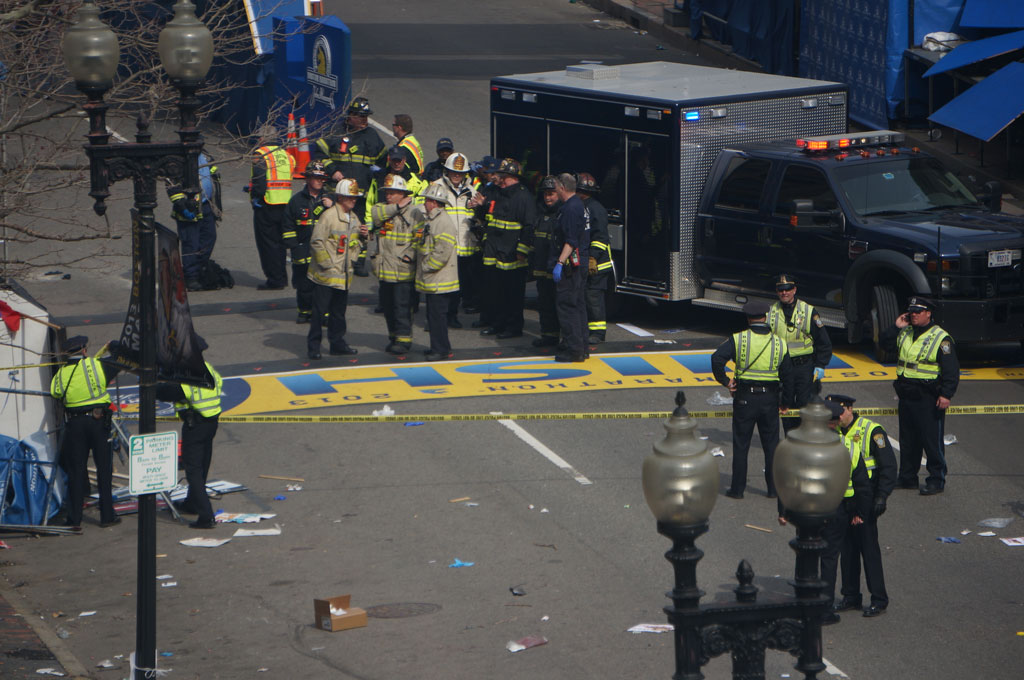
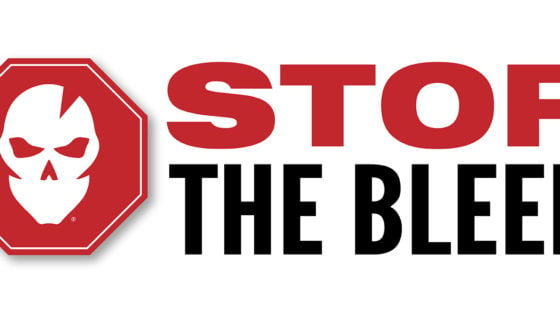
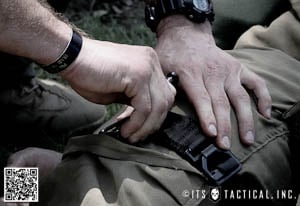
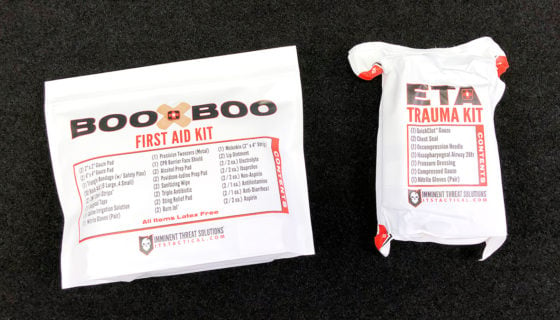
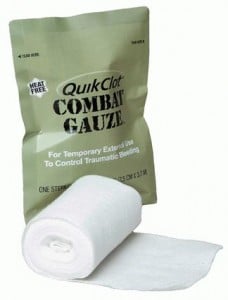

Discussion